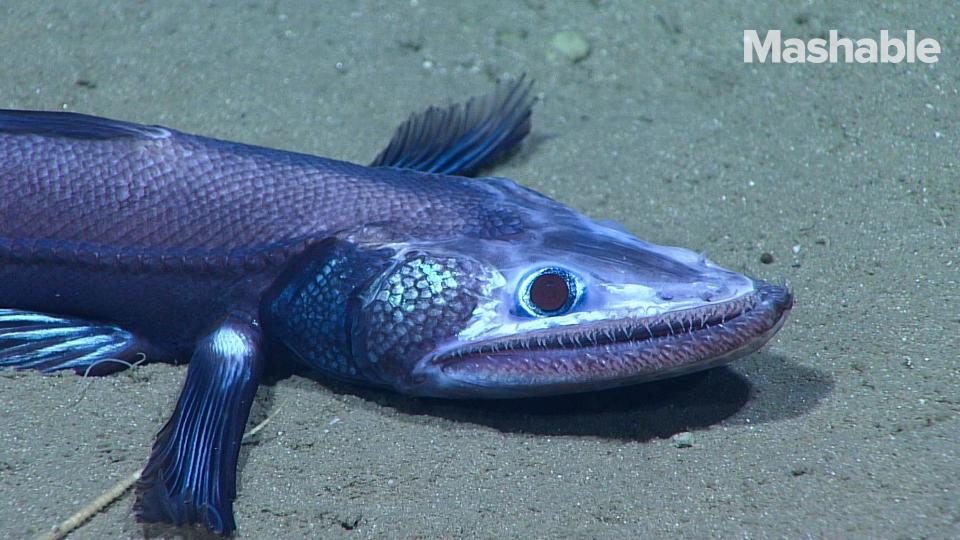Ripley, the SpaceX test dummy, is buckled in and ready for launch

Space travel is set to take a pivotal step forward this weekend.
SpaceX, in the first test demonstration of a commercial crew capsule designed to eventually send astronauts to the International Space Station, plans to launch its Crew Dragon spacecraft on Saturday, March 2, at 2:49 a.m. ET, from NASA's Kennedy Space Center.
The commercial spaceflight company has worked closely with NASA engineers to design a capsule that meets the agency's rigorous safety standards. This six-day mission — which carries along a test dummy covered in sensors, nicknamed Ripley — endeavors to blast into space, attach to the space station, and then parachute back down to Earth.
(There will be no humans aboard.)
"I’m very comfortable with where we’re headed with this flight. I fully expect we’re going to learn something on this flight. I guarantee you everything will not work exactly right. And that’s cool," Bill Gerstenmaier, the associate administrator for NASA’s human spaceflight program, said during a launch briefing last week, The Washington Post reports.
We are excited that Ripley, an anthropomorphic test device, will be making the trip to and from @Space_Station. She is outfitted with many sensors to provide teams detailed information to further understand the effects on future crew members who will be traveling in Crew Dragon. https://t.co/yo19LYZwCy
— NASA Commercial Crew (@Commercial_Crew) March 1, 2019
"... We want to maximize our learning so we can get the stuff ready so when we put crew on we’re ready to go do a real crew mission,” Gerstenmaier said.
This launch is the opening gun in a new space race, specifically as part of NASA’s Commercial Crew Program. The program involves NASA working with two partners, SpaceX and Boeing, to build revolutionary spacecraft to bring astronauts to the space station and low orbits around Earth.
SEE ALSO: NASA dropped a space exploration robot into Cape Cod’s waters to reach the darkest unknowns
The Dragon capsule holding Ripley — which NASA calls an "anthropomorphic test device" — will launch atop SpaceX's reusable Falcon 9 rocket — the same rocket the company uses to launch supplies to the space station.
Unlike Elon Musk's Starman — which SpaceX strapped tightly to a Roadster during last year's sensational test launch of the Falcon Heavy rocket — Ripley serves an engineering purpose. Ripley, donning a sleek white spacesuit, is covered in sensors to measure the vibrations and sound occurring inside the capsule during its high-speed journeys to, around, and back to Earth.
SpaceX and @NASA have completed thousands of hours of tests, analyses, and reviews in preparation for Crew Dragon’s first test flight to the @space_station pic.twitter.com/JvJqeoLKVy
— SpaceX (@SpaceX) February 28, 2019
If the early Saturday morning launch goes as planned, the Dragon capsule will dock with the space station at 6:00 a.m. March 3, where it will stay for five days. Then, on Friday, March 8 at around 2:30 a.m. ET, the capsule will leave the space station and some five hours later fall through Earth's atmosphere. Soon after, the spacecraft will deploy four large parachutes to slow down.
NASA expects a gentle splashdown in the Atlantic Ocean off of Cape Canaveral, Florida at around 8:45 a.m. ET.
The U.S. has lacked both a rocket and spaceship to launch astronauts into space since the retirement of the Shuttle program, in 2011. Since then, NASA has had to purchase pricey seats aboard Russia's Soyuz rocket, which cost $81 million per seat.
The Demo-1 Flight Readiness Review has concluded. The Board set March 2 at 2:48 a.m. EST as the official launch date for @SpaceX's flight to @Space_Station. #LaunchAmerica https://t.co/2DIJ99guG2 pic.twitter.com/86lV29gVNS
— NASA Commercial Crew (@Commercial_Crew) February 22, 2019
Acknowledging that there may be delays with the SpaceX and Boeing crew capsules, NASA has purchased two more future seats aboard the Soyuz rockets, one in 2019 and one in 2020, Space News reports.
But when SpaceX and Boeing's spacecraft do start carrying real passengers — not test dummies — the price for a ride into space will fall considerably, to around $58 million per seat, NASA said.
WATCH: This "horror" was spotted off the coast of the Carolinas


